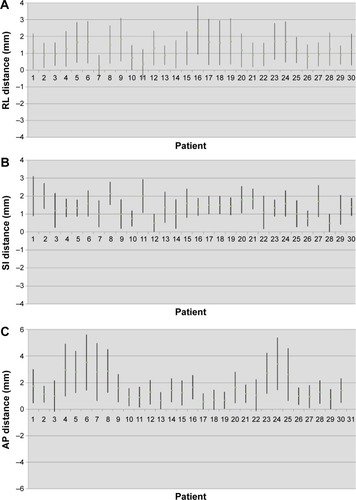Figures & data
Figure 1 Image registration by automatic bone matching and manual fine-tuning method in head.
Abbreviations: NPC, nasopharyngeal carcinoma; CT, computed tomography.

Figure 2 Image registration by automatic bone matching and manual fine-tuning method in upper neck.
Abbreviations: NPC, nasopharyngeal carcinoma; CT, computed tomography.

Figure 3 Image registration by automatic bone matching and manual fine-tuning method in lower neck.
Abbreviations: NPC, nasopharyngeal carcinoma; CT, computed tomography.

Figure 4 Setup errors of 30 patients in the (A) right–left direction; (B) superior–inferior direction, and (C) anterior–posterior direction (the mean ± SD).

Table 1 The translational shifts >3 mm in RL, SI, and AP directions of head, upper neck, and lower neck
Table 2 Summary of interfraction translational error (mm) in each dimension
Table 3 Analysis of variance of setup errors in different parts in RL, SI, and AP directions
